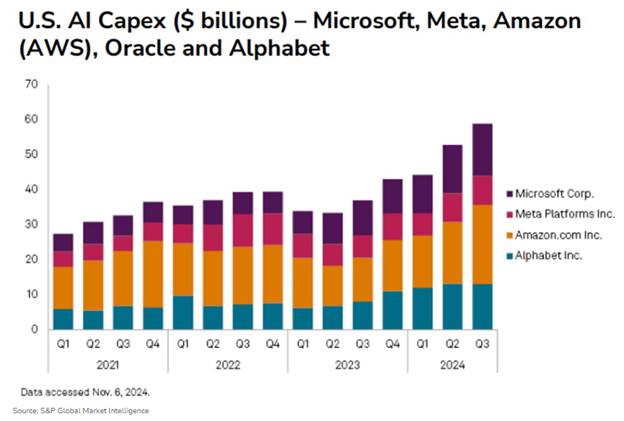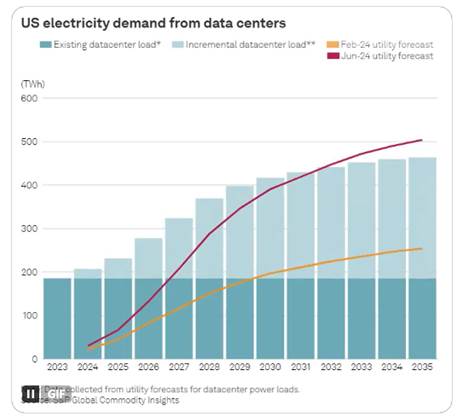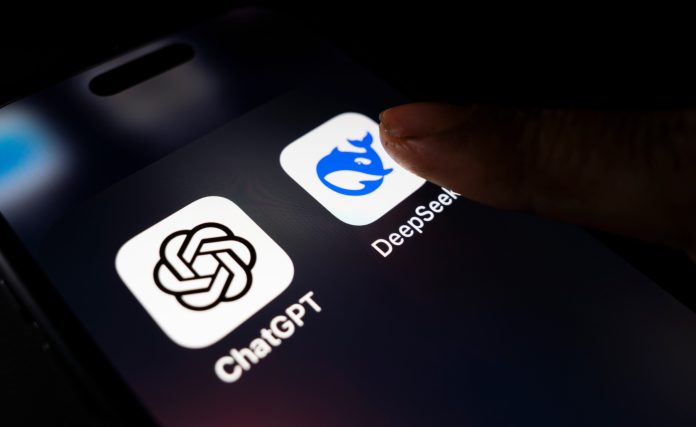DeepSeek and the Jevons’ paradox
DeepSeek, a Chinese generative AI, has been shaking up the artificial intelligence market since its launch on January 27, 2025. In just a few days, the application became the most downloaded on the American App Store, overtaking ChatGPT developed by the American company OpenAI. This has reignited the debate on Sino-American technological competition, and could lead to an intensification of AI efforts in the USA.

American investors fear competition from DeepSeek, an AI made in China that boasts a low-cost model. We’re beginning to learn more about the start-up behind this new model of free, open and open access AI. The open source model on which DeepSeek is based could give rise to a new low-cost AI economy.
The accusations against DeepSeek have intensified. OpenAI, the parent company of ChatGPT, is accusing the Chinese start-up of illegally using its data to train its model. According to OpenAI, DeepSeek employed a “massive distillation” technique, enabling its AI to learn efficiently from ChatGPT. David Sacks, AI advisor to the Trump administration, supports these allegations, claiming that DeepSeek “distilled knowledge extracted from OpenAI’s models“. Microsoft and OpenAI have reportedly launched an investigation into whether their data was obtained in an unauthorized manner. However, no concrete evidence has been publicly presented to support these accusations. DeepSeek maintains its transparency by publishing its source code, but has not made its training data public. These accusations have led to government reactions. The US administration is examining DeepSeek’s impact on national security, while Italy’s CNIL has opened an investigation into the Chinese AI. it could soon be banned on US soil. A recently introduced bill provides for fines and even prison sentences for those who use it.
Developed by an eponymous start-up founded by tech prodigy Liang Wengfeng and based in Hangzhou, the “Chinese Silicon Valley” of eastern China, this conversational agent offers many features similar to its American counterparts. DeepSeek was launched via a hedge fund set up to use mathematics and AI in stock trading. High-Flyer built its first AI model in October 2016, before starting to leverage these models to develop almost all its stock positions in 2017. It then recruited a research team dedicated to AI algorithms. Conducting fundamental AI research has enabled High-Flyer to become one of the country’s largest quantitative funds, according to The Economist, with a portfolio growing from 1 billion yuan (130 million euros) in 2016 to 10 billion yuan in 2019. AI remains under the yoke of Chinese censorship. Asked, for example, about the Tiananmen Square massacre in Beijing on June 4, 1989, DeepSeek says it cannot ” answer that question “, explaining that it is “guided by guidelines to avoid sensitive or controversial topics, especially those related to complex historical or political events”.
Interview with Liang Wenfeng, founder of DeepSeek, given to Waves in July 2024, on The China Academy website.
A potentially disruptive business model. This conversational robot surprised experts with its ability to rival its Western competitors, particularly when it came to writing complex code. DeepSeek was able to perfectly execute a reverse-engineering program on various tools developed by Westerners. While the trend in the sector seemed to be towards exponential data consumption, reserving the future of AI for giants able to finance ever-larger data centers, DeepSeek’s engineers succeeded in creating AI products at a cost well below that of American hyperscalers.
Its founders claim to have invested just $5.6 million to develop it. A derisory sum compared to the billions spent by Silicon Valley firms to achieve an almost similar result. Whereas the American chatbots were designed with high-performance chips, to which China has no access, DeepSeek uses H800 chips available on the Chinese market. Chinese AI also has open source code, which means that anyone can access and modify it, unlike its rivals who have developed proprietary models. This means that DeepSeek doesn’t need the most powerful GPUs to operate, enabling it to reduce its operating costs and therefore offer lower prices to its customers.
While American companies such as OpenAI, Anthropic and Meta are widely regarded as dominant, the USA has attempted to curb Chinese advances by imposing strict restrictions on the export of AI chips and semiconductor equipment. In an interview with Waves last year, Liang Wenfeng asserted that US restrictions were the main challenge for DeepSeek to overcome : ” Money has never been a problem for us. The problem is the embargo on high-end chips. “.
In the USA, the AI sector has recently entered a phase of massive investment. Last week, Meta confirmed a budget of $60-65 billion in capital expenditure (Capex), while Microsoft plans to spend $80 billion in this area. At the same time, the US President reaffirmed the country’s AI ambition by announcing Project StarGate, a massive $500 billion program of investment in AI infrastructure over the next few years.

Deepseek has released open-source code, never made its training data public, and also admits to using what’s known as distillation. This involves drawing on the knowledge of a more advanced model to quickly train a more limited one. It’s a classic technique that everyone uses, not least because we’re starting to run out of training data.
How exactly does the AI distillation technique work?
AI distillation is a model compression technique that aims to transfer knowledge from a large model (called the “teacher model”) to a smaller model (called the “student model”). The process takes place in two main stages:
- Teacher model training: A large, pre-trained model, usually complex and powerful, is used as a starting point.
- Knowledge transfer: The smaller student model is trained to mimic the predictions and outputs of the teacher model. This is done by using the predictions or output probabilities of the teacher model as training data for the student model.
This technique results in models that are faster to run, more economical in terms of energy and resources, while maintaining performance close to that of the original model..
Donald Trump called the emergence of DeepSeek a “wake-up call” for US manufacturers, urging them to ” stay very focused on competing to win “. Last week, the American president announced a plan to spend over $500 billion to strengthen AI in the United States. For his part, Tim Cook, at Apple’s latest financial results, acknowledged the innovation DeepSeek had shown in reducing the cost of training and running its V3 model now in competition with ChatGPT o3: ” In general, I think innovation that drives efficiency is a good thing, and, you know, that’s what you’re seeing in this model. “
A turning point in the AI economy?
In a nutshell, the “DeepSeek revolution” comes from the fact that, in its latest version, this model boasts performance close to that of the latest version of ChatGPT, but at a cost 20 to 30 times lower for the customer. OpenAI CEO Sam Altman has publicly acknowledged DeepSeek-R1’s prowess, while promising to fight back with even more advanced models. Two years ago, at a conference in India, Sam Altman confidently rejected the idea that an emerging start-up could shake OpenAI’s supremacy. In his view, training basic models required resources that were inaccessible to new entrants in the sector.
While the operation of artificial intelligence is energy-intensive, promoting smaller, more fit-for-purpose AI models could make sense. The electricity consumed by digital data centers worldwide is set to double by 2026, mainly due to the rise of AI and cryptocurrencies, according to a report published on January 24 by the International Energy Agency. This need could rise from 460 TWh in 2022, or 2% of global demand (25% of which for cryptocurrencies), to 1,050 TWh, a leap equivalent to the consumption of an additional country, on the order of Germany’s.

Deepseek will have proved that it’s smarter to build on these huge models than to try and develop ever bigger ones. In any case, the AI race is set to accelerate, again at the initiative of the Chinese. In the last few days, Alibaba and ByteDance, the parent company of TikTok, have launched their new AI models. Once again, these are advertised as more powerful.
AI is not a passing fad, and the rise of DeepSeek only consolidates its central place in technological and economic evolution. DeepSeek lowers the barriers to entry, encouraging wider adoption. Contrary to fears of saturation, as AI becomes more accessible, its use multiplies, a phenomenon observed in other technological revolutions and known as Jevons’ paradox. Jevons’ paradox states that as technological improvements increase the efficiency with which a resource is employed, the total consumption of that resource may increase rather than decrease.
In short, DeepSeek lowers the barriers to entry, encouraging wider adoption. Contrary to fears of saturation, as AI becomes more accessible, its use multiplies.
There are still many unknowns surrounding the Chinese start-up, but further announcements are likely to follow. It’s still too early to comment on the viability of its business model or its security. What is certain is that this does not call into question the artificial intelligence revolution; on the contrary, it should accelerate the process by reducing barriers to entry. The number of players in the sector will grow faster than anticipated, and prices will fall.
The DeepSeek affair is of major importance, as it could have a deflationary effect and impact the entire value chain. From a macroeconomic point of view, this could be good news. However, for some companies, models based on insolent growth rates and margins could be called into question.
If the new versions from the Chinese manufacturer have shaken investors in some companies, they should be a source of optimism for the whole world, particularly for Europe, which seemed to be at the back of the pack, but which could also stay in the race. DeepSeek demonstrates how competition and innovation can make AI cheaper and therefore more accessible and useful.



